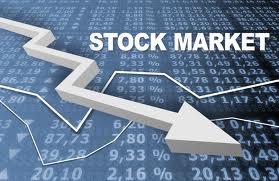 Stock market indexes, basically, could be defined with the help of two main features – weighing system, using market value, price or average value; and method of averaging, which can be arithmetical or geometrical.
Stock market indexes, basically, could be defined with the help of two main features – weighing system, using market value, price or average value; and method of averaging, which can be arithmetical or geometrical.
If we are to construct a given index, the easiest way to do it is by using prices of stocks without taking into consideration any weights. In this case, we have an index on the basis of prices. The specific matter here is, that price fluctuations of companies with higher share prices could probably dominate the performance of the index itself. This comes as a result of higher absolute values of price changes.
Let us have an example. We will focus on two companies ”Leader” and ”CDS”, which have an identical capital structure. ”Leader” has 1 000 000 shares listed, 1.00 USD each, while ”CDS” has 200 000 shares, 5.00 USD each. Let us suppose that net assets of both companies rise by 10%. Share price of ”Leader” will increase by 0.10 USD, while share price of ”CDS” will climb by 0.50 USD. In this case, ”CDS” will trigger a greater change of the index value, because the company issued a smaller amount of shares at a higher price, despite the fact that market capitalization of both entities is identical.
Another possible way to construct an index is to give equal weight to prices of each share. Equal weight can be achieved if we take into consideration the proportionate change of each share price in comparison with a predefined basis. More precisely, we measure the relative change of prices, or stock return. In such case, companies with higher share price do not cause the abovementioned influence on the index value, but such method ignores the difference in size of each company. Or in other words, the constructed index treats equally a company with a 500 000 000 USD market capitalization and a company with a 50 000 000 USD market capitalization.
The weighted index treats higher the prices of one group of shares and lower the prices of other group of shares. Different weighing methods give advantage to shares of companies with high market capitalization. Market capitalization is the number of shares, issued by one company, multiplied by the share price on a concrete date. This method is more advantageous, compared to others, because share price is weighted in accordance with its meaning in the averaged portfolio of shares, held by an investor. Therefore, changes in index value will reflect changes in the value of the averaged portfolio, or the market as a whole. If we have a portfolio, comprised of assets with equal values, the more appropriate index to measure the changes in that portfolio is the equally-weighted one. There are other weighing systems, for instance, like the one used in Toronto Stock Exchange 35 index. It is weighted on the basis of number of shares rather than market capitalization.
Prices of all shares should be averaged in order to form one single value, the market index. This average value can be arithmetically or geometrically calculated. Arithmetical indexes are a simple sum of share prices, weighted using market capitalization or prices, divided by the number of shares, comprising these indexes. Arithmetically weighted index of three given companies will be:
AWI = (w1*x1 + w2*x2 + w3*x3), where ”w” refers to weights, which total sum is 1, while ”x” refers to values, which need to be averaged.
On the other hand, geometrically weighted index of three given companies will be:
GWI =
All weighted and equally-weighted indexes are defined by a base date. This is the date, on which the index value was set to 1, 100, 1 000. For indexes, based on prices, base date is not of that much importance. They usually are denominated in the given country’s currency rather than being presented as an index of increase, compared to the base date.
Every date can be a base date, but in market indexes case, this usually is the date, on which the index was calculated for the first time. Base date of a market index reflects a given moment in time, while the index reflects current state at a given moment. That is the main difference between a market index and, for example, a Gross Domestic Product index. The latter reflects a whole period of time, one year, for instance.